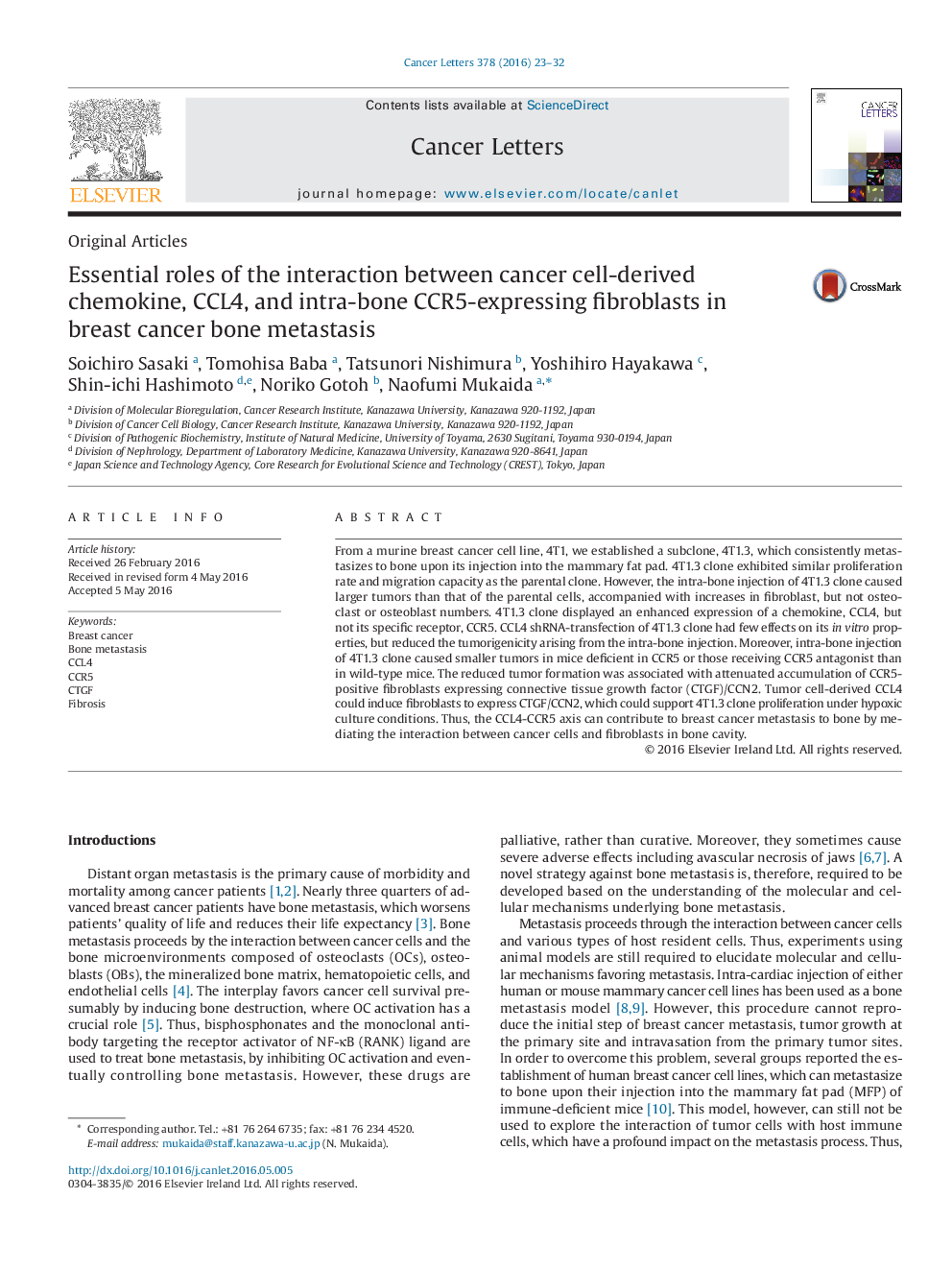| کد مقاله | کد نشریه | سال انتشار | مقاله انگلیسی | نسخه تمام متن |
|---|---|---|---|---|
| 2112301 | 1084362 | 2016 | 10 صفحه PDF | دانلود رایگان |

• 4T1.3 cells exhibited highly bone metastasis capacity and stem cell-like phenotype.
• CCL4 was upregulated in 4T1.3 cells but did not affect in an autocrine manner.
• Abrogation of CCL4 reduced intra-bone tumor formation.
• CTGF expressing fibroblasts were accumulated in bone cavity via CCL4-CCR5 interaction.
• CTGF could support 4T1.3 clone proliferation under bone cavity similar environment.
From a murine breast cancer cell line, 4T1, we established a subclone, 4T1.3, which consistently metastasizes to bone upon its injection into the mammary fat pad. 4T1.3 clone exhibited similar proliferation rate and migration capacity as the parental clone. However, the intra-bone injection of 4T1.3 clone caused larger tumors than that of the parental cells, accompanied with increases in fibroblast, but not osteoclast or osteoblast numbers. 4T1.3 clone displayed an enhanced expression of a chemokine, CCL4, but not its specific receptor, CCR5. CCL4 shRNA-transfection of 4T1.3 clone had few effects on its in vitro properties, but reduced the tumorigenicity arising from the intra-bone injection. Moreover, intra-bone injection of 4T1.3 clone caused smaller tumors in mice deficient in CCR5 or those receiving CCR5 antagonist than in wild-type mice. The reduced tumor formation was associated with attenuated accumulation of CCR5-positive fibroblasts expressing connective tissue growth factor (CTGF)/CCN2. Tumor cell-derived CCL4 could induce fibroblasts to express CTGF/CCN2, which could support 4T1.3 clone proliferation under hypoxic culture conditions. Thus, the CCL4-CCR5 axis can contribute to breast cancer metastasis to bone by mediating the interaction between cancer cells and fibroblasts in bone cavity.
Journal: Cancer Letters - Volume 378, Issue 1, 1 August 2016, Pages 23–32